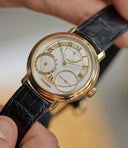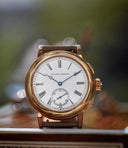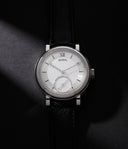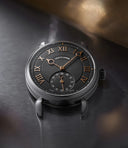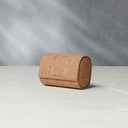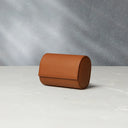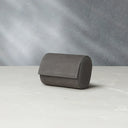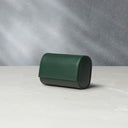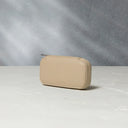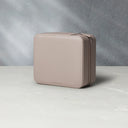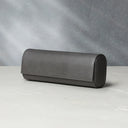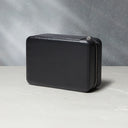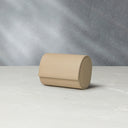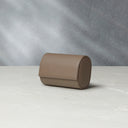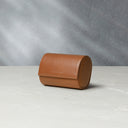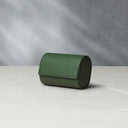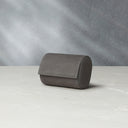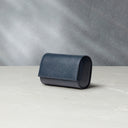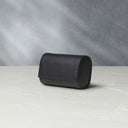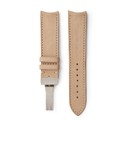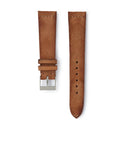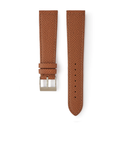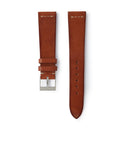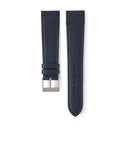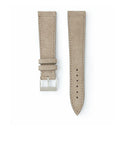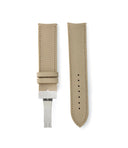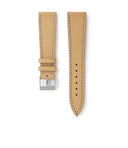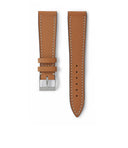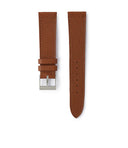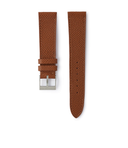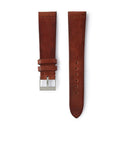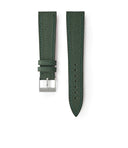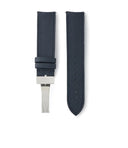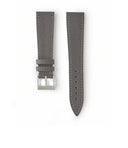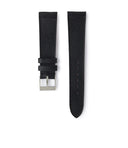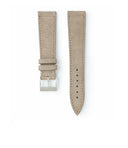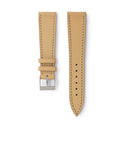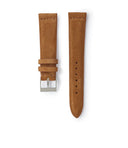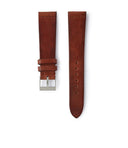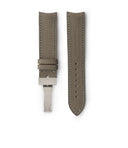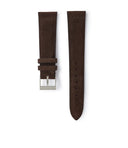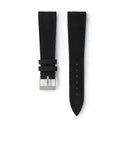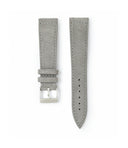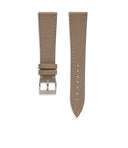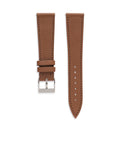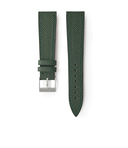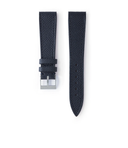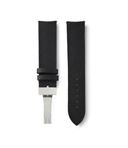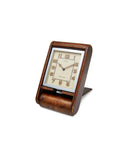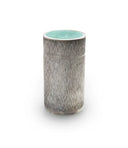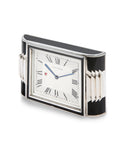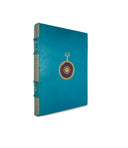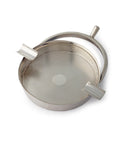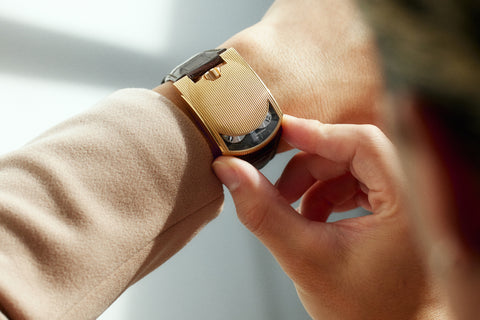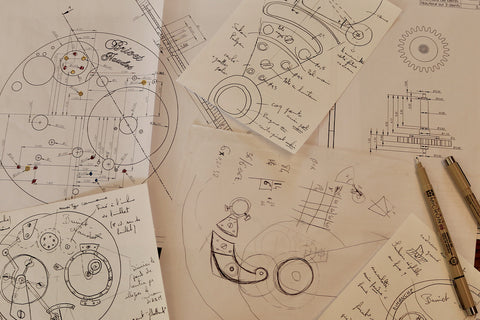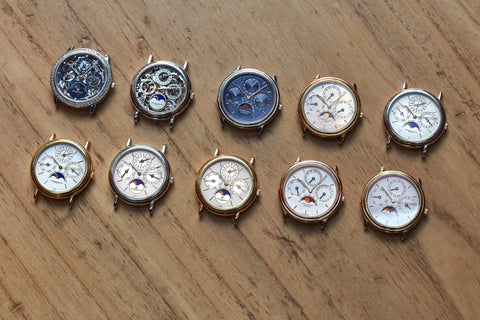Introduced in 2002, the Orbita Lunae is another addition to Andersen Genéve's colourful collection, focusing on the moon's orbit around the earth. Making use of a variation on the wandering complication, the moon and the central disc rotate over the course of a month, indicating the date and the current phase of the moon. Only 31 examples of the Orbita Lunae were created, making this an intriguing and rarely-seen example from the brand.
The watch combines both modern and traditional elements, with a solid gold dial mixed with a small amount of iron. The colour is transformed into a deep blue by heating the dial slowly, allowing a rich shade to form that sits somewhere between a deep green and blue. Meanwhile, an intricate wave-like guilloché pattern can be found across the blue gold, the pattern getting smaller and tighter towards the aperture. Below this is a separate disc that holds a golden moon with a smiling face engraved on the surface, and it is surrounded by a similar guilloché pattern.
These traditional methods are juxtaposed against the modern sans-serif font that decorates the date ring surrounding the centre of the dial, with numerals in white against a black background. This monochrome palette is then flipped for the minute track on the outermost section, with the Andersen Genève signature placed below 6 o'clock, and a V-shaped indicator above 12 o'clock to point towards the dates.
The function of the complication is quite ingenious, as each day of the month goes by, the engine-turned central section of the dial rotates anti-clockwise, making one full revolution every month. At the same time, the disc at the lowest position, holding the golden moon face, also rotates, with the various phases of the moon displayed over the course of the month through the circular aperture. Notably, instead of having a separate pusher on the case, the date change function is done entirely through the crown, which changes the date and moonphase simultaneously, a tricky feat of engineering to pull off.
Andersen makes use of a vintage calibre in the Orbita Lunae, refinished and modified to his requirements and referred to as the 1147CD. The base calibre that powers this example is the A. Schild AS calibre 1716, which was introduced in 1964. It is a remarkably thin movement at just 4.1mm, with calendar functions and a ball-bearing winding rotor. This golden rotor is decorated with an asymmetrical engraving of interlocked "A" letters, a subtle inclusion of the watchmaker's signature. The visible bridges of the movement are also finished beautifully with Geneva striping and bevelled edges throughout.
Cased in yellow gold, the lugs of this piece are especially notable, as they feature a triangular flare that sit at an angle to the rest of the rounded shape. These were created especially for the model.
































































































